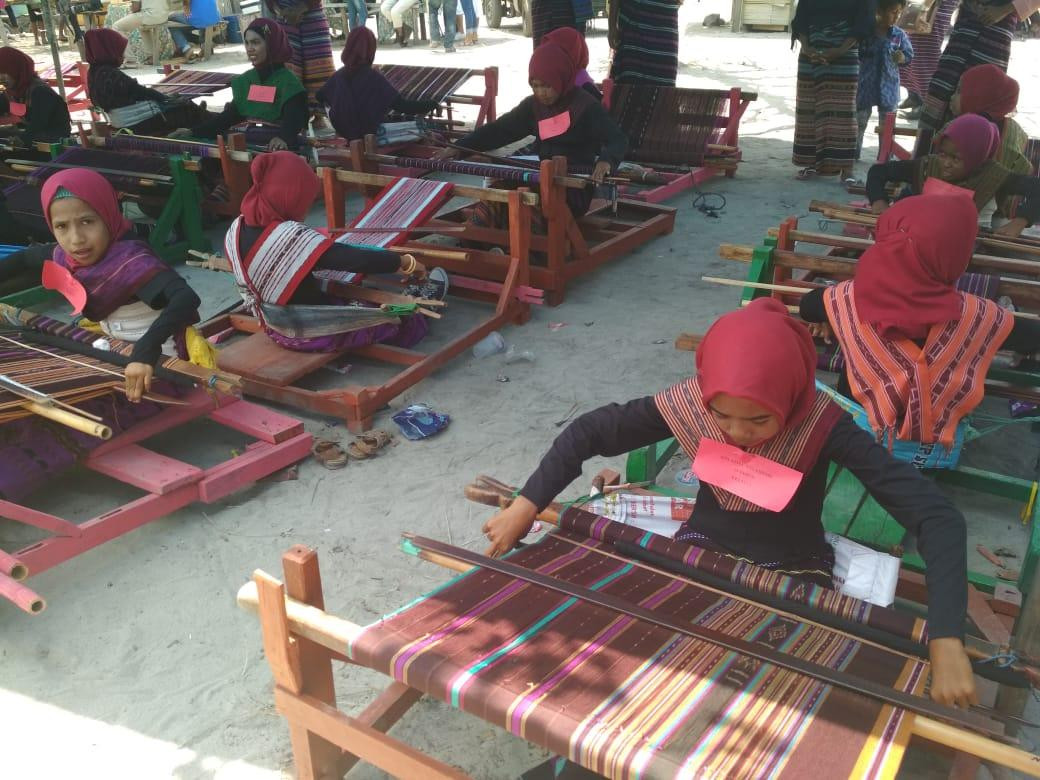Popular Reads
Top Results
Can't find what you're looking for?
View all search resultsPopular Reads
Top Results
Can't find what you're looking for?
View all search resultsWeaving to become a compulsory subject at East Flores schools
Weaving has been a part of Lamaholot’s history and culture for centuries, with an abundance of myths and folklore about Lamaholot women and their weaving.
Change text size
Gift Premium Articles
to Anyone
T
he success of the Lamaholot Festival in the last two consecutive years has prompted East Flores Regent Anton Gege Hadjon to make weaving a compulsory subject taught in all levels of education in the East Nusa Tenggara (NTT) regency.
Anton expressed hope that East Flores weaving would continue in the hands of the younger generations of Lamaholot in East Flores, Lembata, Alor and the surrounding islands of NTT.
At the art and culture festival held on Sept. 15, Anton told participants: "This year, we will have weaving as a local subject for every school in East Flores.”
He added that he would send weaving instructors to schools to teach students how to make good-quality weaving products.
East Flores Regent Anton Gege Hadjon (center) talks to children from Adonara Island, East Flores, East Nusa Tenggara, at the Lamaholot Festival on Sept. 15. (JP/Hengky Ola Sura)Silvester Petara Hurit, curator of the Lamaholot Festival, said he supported the regent’s announcement, calling it “an extraordinary breakthrough”.
He said weaving has been a part of Lamaholot’s history and culture for centuries, with an abundance of myths and folklore about Lamaholot women and their weaving.
A bronze sculpture was found as a family heirloom in Flores in 1977, called Wulu (The Weaver). It is now part of a collection at the National Gallery of Australia in Canberra. Silvester called it an important piece of evidence of the weaving history of East Flores. In great detail, the sixth-century sculpture depicts a mother who weaves while breastfeeding her child.
“There is a world in a piece of woven cloth,” said Silvester. “As a cultural piece, it unravels the history of the community. Seeing a woven cloth is like gazing into the collective conscious and subconscious structure of Lamaholot.”
Read also: Preserving the weaving legacy
In Flores, it is acknowledged that woven cloth offers insights into the region’s people and communities. The process of making one is a cultural activity rich in values and meaning. The motifs symbolize cosmology and depict the origins and devout nature of the East Flores people.
In Lamaholot weddings, it is customary to welcome the bride and groom by putting a piece of woven cloth around their shoulders. Motifs of flying cotton represent hope for growth and happiness, while the mayang lontar (palm flower) symbolizes fertility.
When a death occurs, the deceased is wrapped with layers of woven cloth with motifs that represent guidance and the journey to the hereafter.
Other motifs include Ula Age and Ile Mandiri as symbols of hope, Niwan that represents strength and Kelisin that speaks of sincerity.
Along with motifs, colors are chosen with a purpose. Black in the Wulanggitang motif means protection, red is courage, while yellow is for health and intelligence.
In the past, a woman’s dignity was measured by her weaving skill as the activity needed understanding, patience and tenderness.
Azisah Kedang, a participant of the Lamaholot Festival, said she appreciated the regent’s decision in making weaving a customary subject in schools.
"I have been able to weave since I was in the third grade. I can actually earn money from weaving," she said. (yun/wng)












